Ajax are, once again, leading the Eredivisie title battle and are on the verge of doing something remarkable.
Their pattern of signing youngsters and developing them into some of the most wanted players in Europe continues, and they have a very strong collective despite parting with some of their biggest talents in the last few years.
Meanwhile, Erik ten Hag has not only contributed to bringing these players together but also to constantly enhancing the team’s tactics and pushing them forward. While many will say that the 2019 UEFA Champions League semi-final against Tottenham was their most successful year, a closer look at their strategy and performance shows that they have come a long way in their development as a team since then.
Now, they continue to be outstanding in attack but their 70 goals in 23 games don’t seem impressive enough compared to their defensive record. At the time of writing, the team have conceded just five goals in 23 games, which might turn into a historical achievement by the end of the season. None of the leaders in the world’s top 10 leagues are even close to that record at the moment.
Ten Hag’s fifth season in charge is an example of attacking fluency, defensive discipline and the definition of teamwork.
This tactical analysis in the form of a scout report examines their defensive strategy and performance and explains what makes this Ajax team so difficult to score against.
Formations and playing style
The manager usually relies on the 4-2-3-1 and the 4-3-3 formations for his players to perform in symbiosis and play to their potential. With the squad changes over the last five years, he slowly shifted to using the 4-3-3 more frequently, adjusting the system to the players he has available.
While a huge portion of Ajax’s success is a result of using players’ strengths in the right way, the manager still looks to improve their weaknesses and develop them not only individually but as a collective too. His efforts have resulted in developing a productive attacking team with impressively balanced defensive performance too.
This season so far, the team are overperforming in all aspects of the game. They have scored 70 goals, overperforming their xG of 63.49 and been the most efficient team in the league. Dušan Tadić and Sébastien Haller are leading the goalscoring and assisting charts with 44 goals and assists combined.
Building up smoothly from the back and relying on strong positioning, link-up-play and crossing results in high productivity which, combined with the attackers’ high efficiency in front of the goal, makes them difficult to defend against. Their set-piece proficiency is also part of their success in attack.
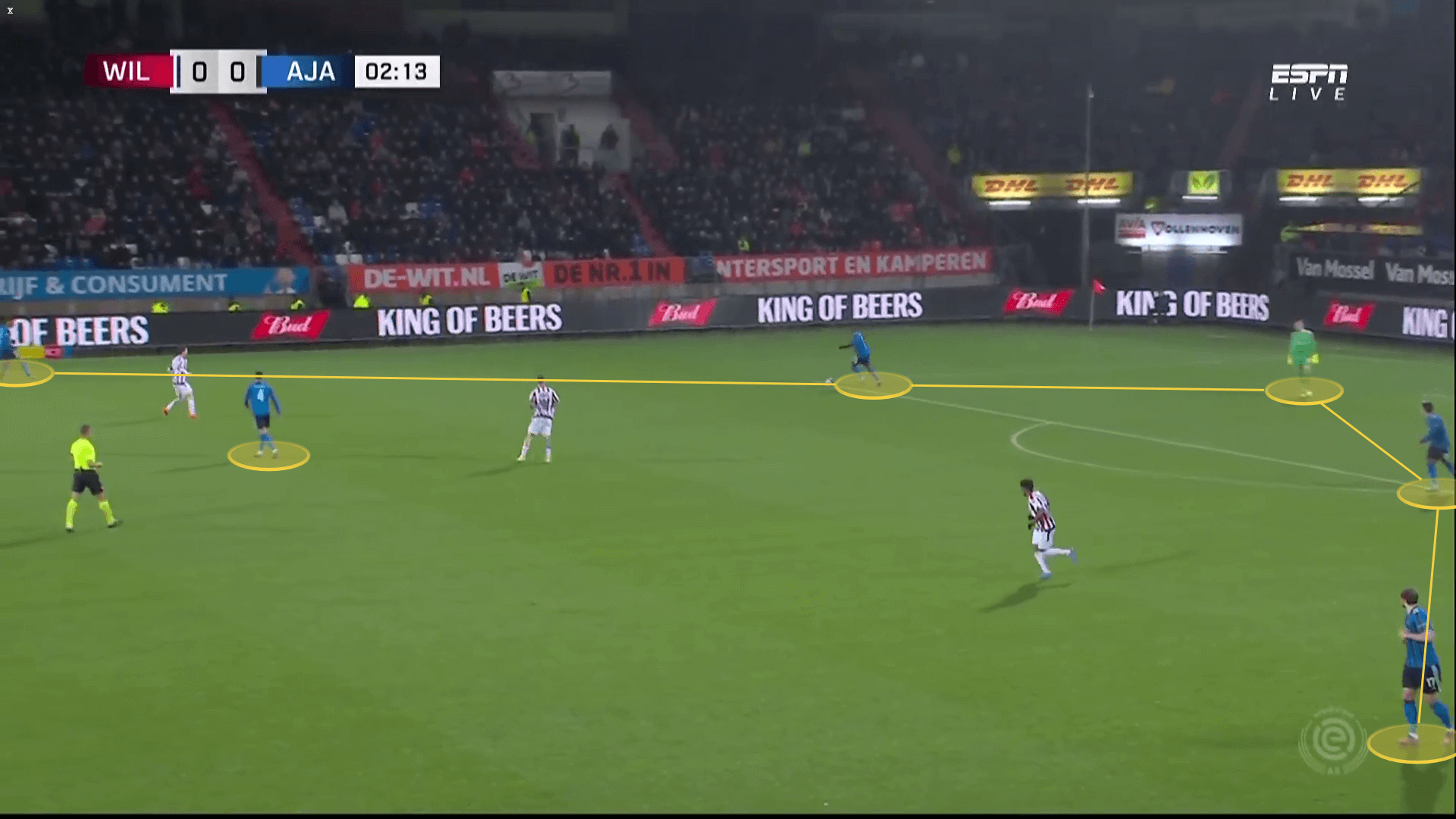
Defensively, their successful performance is a result of an even more complex effort. The team have developed an intense pressing strategy that is the basis of their defensive efficiency. The team aim to recover the ball in the advanced areas, although they pressurise their opponents all over the pitch and have one of the highest numbers of recoveries per game on average. Their ball recovery efforts help them execute their possession-based strategy and increase their average possession rate to 65.13%.
Their reactions during defensive transitions have improved too, as they have developed a better understanding of the game, and even if they overcommit in attack, most of the time they manage to drop back in a timely manner and defend successfully. Their actions in the defensive third are equally well-measured, especially in terms of defending the flanks and avoiding conceding opportunities from crosses.
In the next few sections, we will examine their defensive strategy in more detail and explain what makes them the best performers in the league.
Pressing efforts
Ajax’s pressing strategy is their biggest strength when it comes to their actions off the ball. The team are very particular in the way they pressurise the opposition and consider the areas where to press very smartly. Although most of the time they would press high and aim to recover the ball in the advanced areas, it depends on the opposition’s strategy as they’d adjust their tactics based on their opponents’ movement and structure. While they’d re-organise depending on who they play against, they still try to stick to a particular shape of pressing, as most frequently they’d drop in a 4-5-1 or a 4-3-3 if they don’t succeed in recovering the ball in the final third.
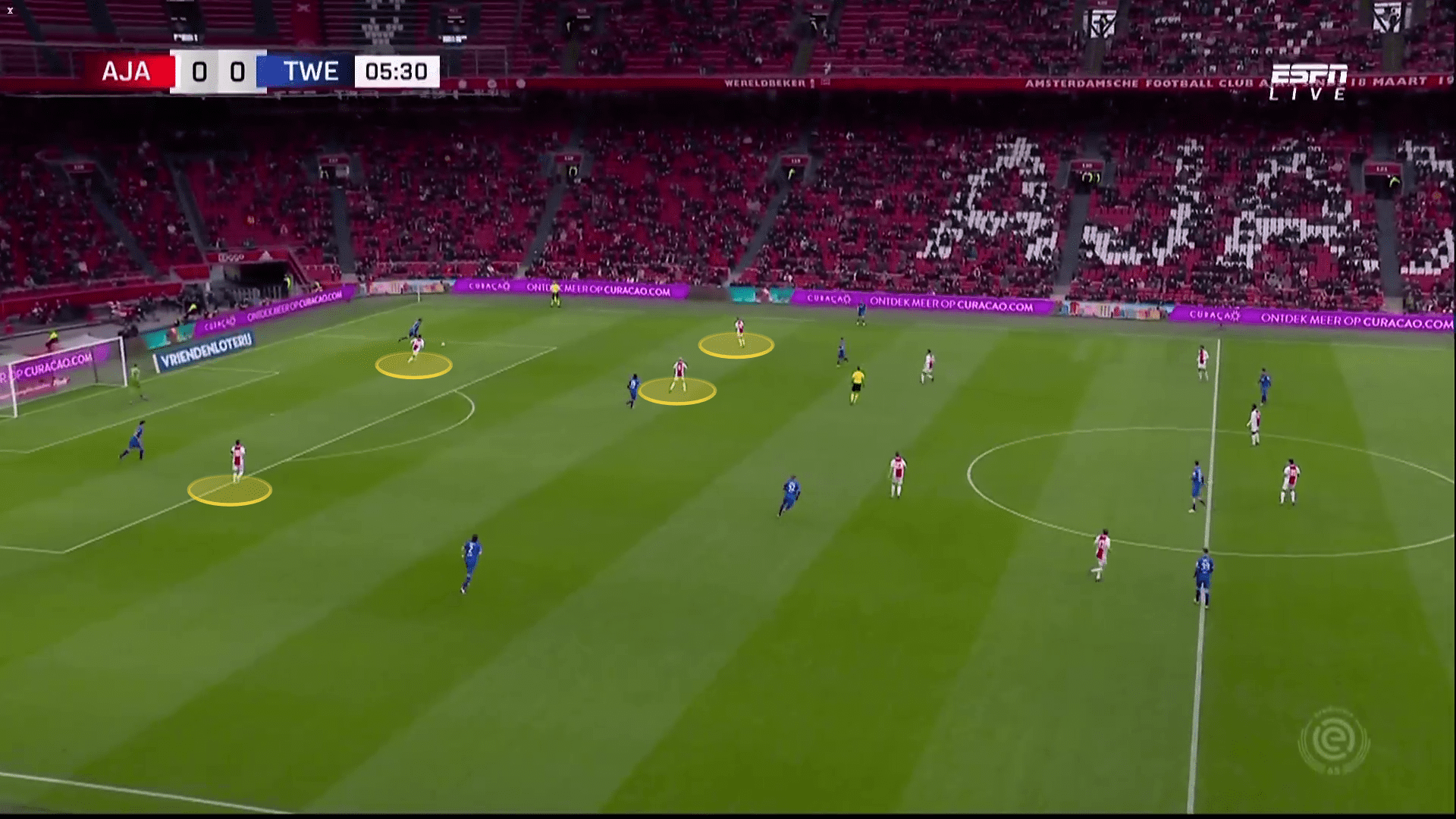
Their actions are often successful due to them creating attacking overloads and the high number of players in the advanced areas who can quickly react and counter-press after losing possession. The advanced players look to pressurise the ball carrier immediately, so they give their teammates the chance to move back in position if they don’t manage to gain back possession.

They look to defend from the front with their man-to-man pressing and even often get the centre-backs on and past the central line to support their press. That’s done not only to keep the opposition away from the goal but also to be able to quickly transition into attack and catch their opponents off guard should they recover the ball in midfield. Their press intensity is also underlined by their 6.57 average PPDA rate.
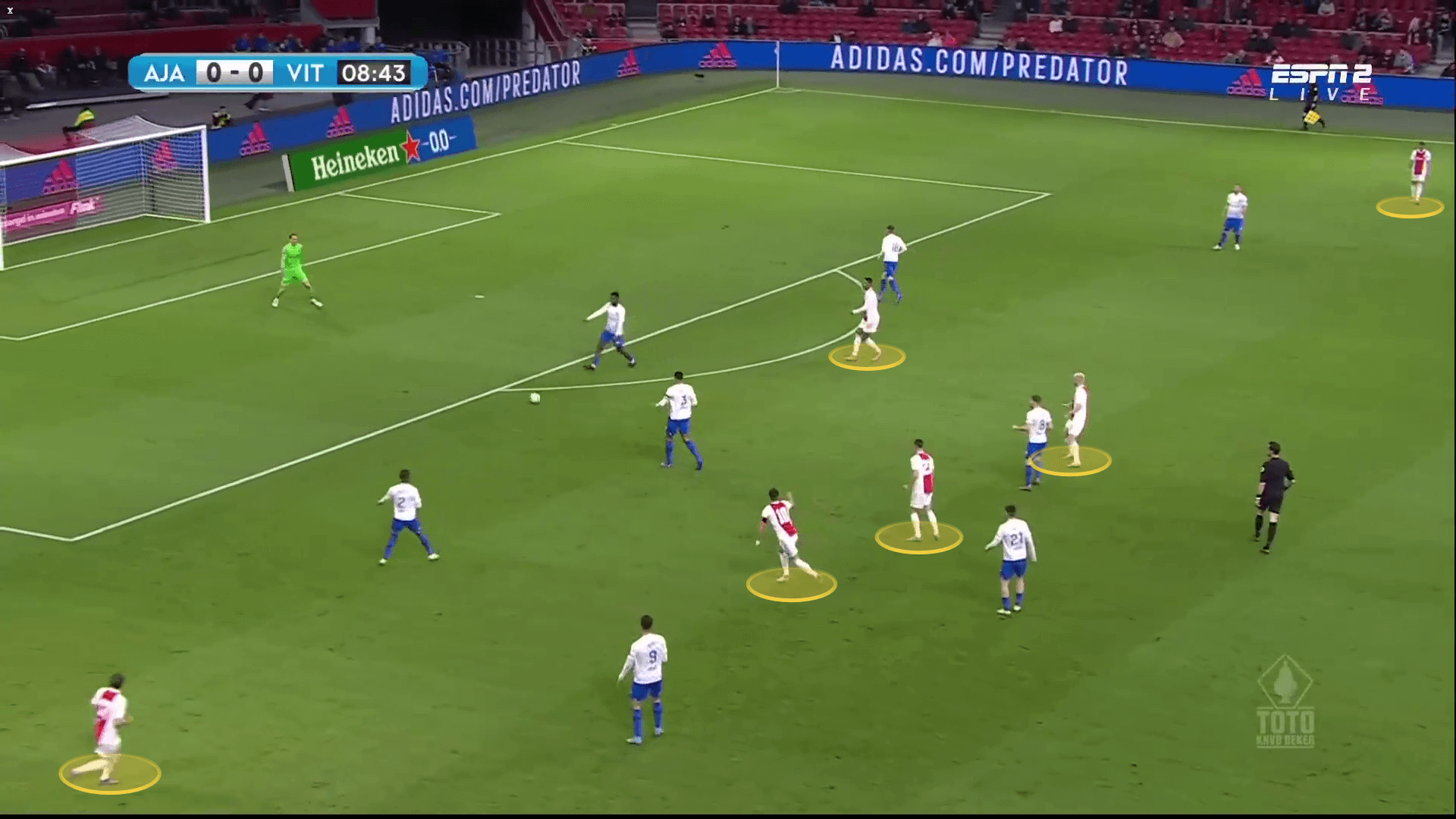
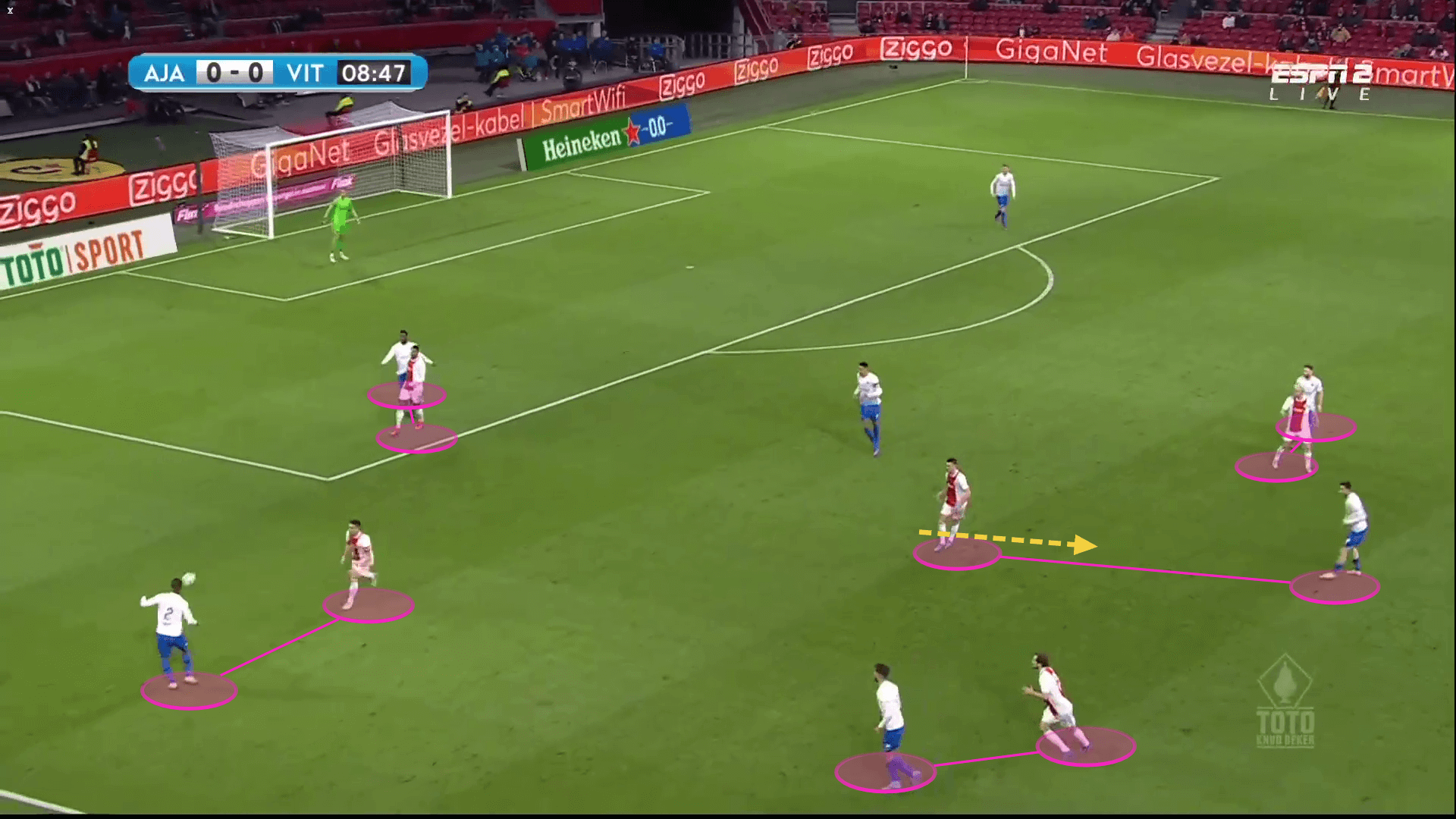
Working on the players’ positional awareness and trying to instil tactical understanding has affected the way the players react off the ball. Their aim to push high and limit the opposition’s space for movement and build-up, while involving many bodies in their press, makes it very difficult to break through. That’s what makes Ajax so successful in keeping their opponents away from the goal and conceding as few as 6.32 shots on average.
Their positioning and man-to-man press also help them to anticipate passes and movement and allow them to recover the ball even if the opposition manage to break through the first defensive line. They average 92.05 recoveries per game not only thanks to their positioning but also due to their strong aerial presence and measured approach in the ground duels.
Defensive positioning and actions in own third
Although very smart, their pressing approach is quite risky, especially when it comes to avoiding leaving gaps behind. The advanced positioning and the man-to-man marking can easily be exploited should they fail to re-organise and drop as a unit. Defending against long balls or quick attacks on the flanks could turn into a vulnerability.
The secret to Ajax successfully avoiding such situations hides in their actions in possession. Despite the team’s fluid build-up and the players’ interchangeable movement, they always try to maintain their structure and have coverage in all positions. That makes their life easier whenever they lose the ball as they do not have tons of space to cover and rarely leave gaps between the lines that can be exposed by the opposition in cases of a turnover.
Expectedly, they do occasionally become exposed if they overload the midfield in efforts to press and stop an attack and fail to drop enough players should the opposition send a quick through ball or a smart pass. Also, due to their pressing, their opponents very frequently rely on long balls or long shots in efforts to bypass the press and create opportunities. Their man-to-man marking sometimes turns into a flaw in such situations, and it is more difficult to react to a long ball behind the defence and cover the ball carrier with more players. For the most part, though, the team manage to block any dangerous attacks.
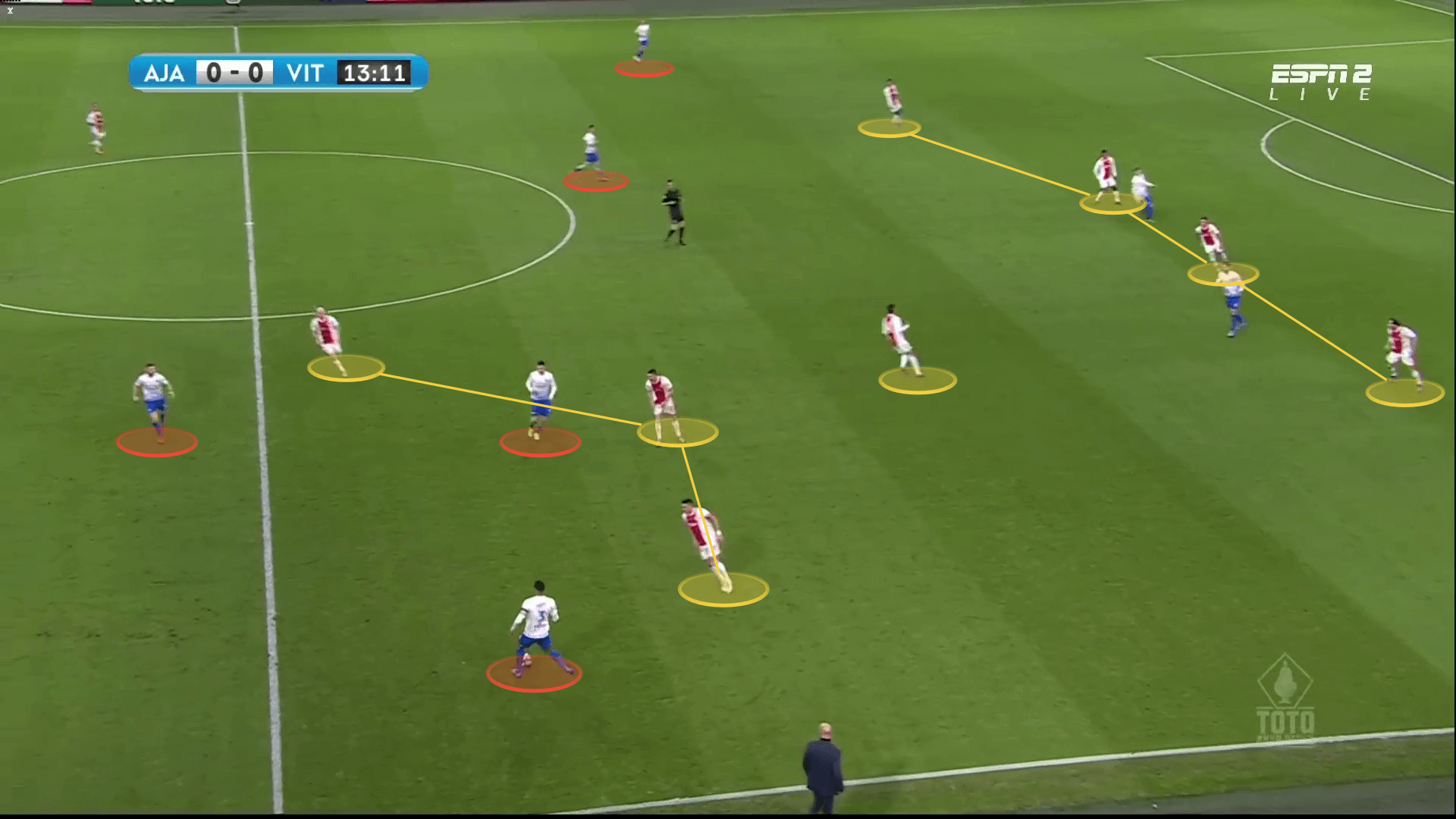
Ajax’s attacking movement focuses on playing with width and relies on the active use of the full-backs. That is why they are most frequently found on and past the central line, supporting the team in possession. That could immediately turn into a threat because many times the wide players fail in their defensive positioning.
Ajax have found a solution to that problem and an example of it is shown in the below map.
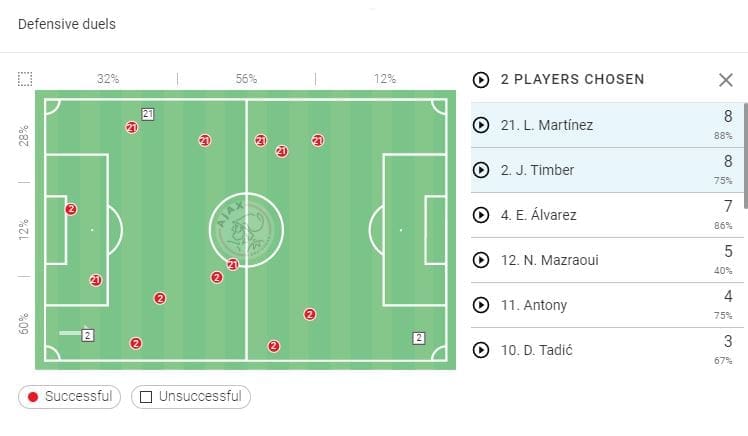
The centre-backs’ movement is crucial as they would constantly move out to the flanks and cover depth for their teammates. As the map of their won defensive duels against Heracles indicates, the most frequent starters, Jurrien Timber and Lisandro Martínez, have been involved in direct challenges mainly in the wide areas. The central midfielders would also often support them. They don’t only do that in cases when the full-backs are unable to drop back or lose the ball but exactly to allow them to stay in an advanced position so they can immediately use them to attack once Ajax recover the ball.
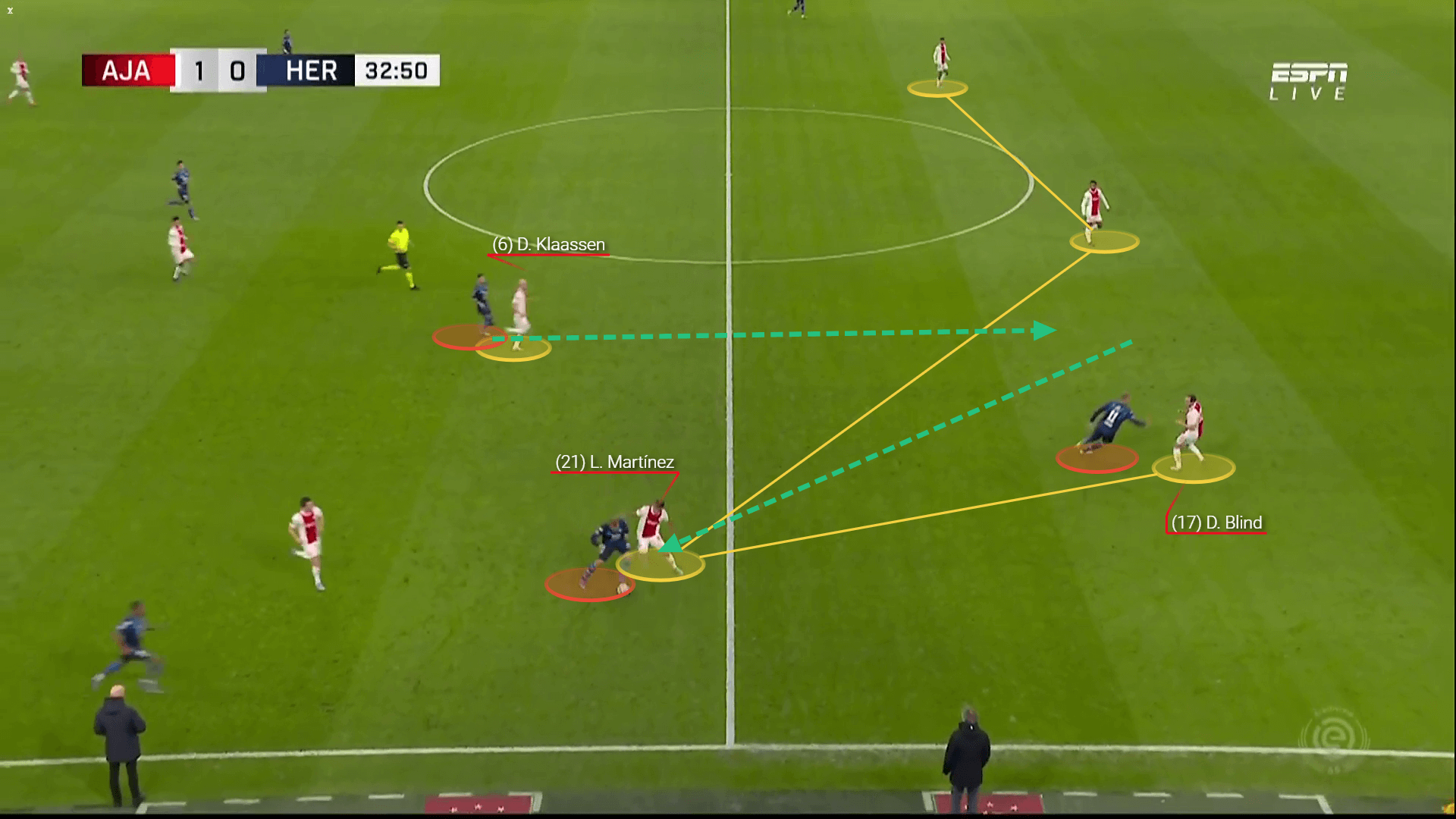
Their aerial performance makes a difference in their performance and often gives them an advantage. Many of the players get involved defensively and contribute in the air as well. They often aim to win the ball in midfield through their aerial duels and avoid entering their defensive third and conceding dangerous changes. The midfielder Edson Álvarez is one of the most efficient players in the air, along with Martínez, who despite being 175cm tall, averages 66.1% won aerials duels per 90. They have both greatly contributed to Ajax being the league leaders in that indicator with 55%.
The team defend successfully in their own third too. The players have a good understanding of the game, and whenever they concede a potentially dangerous attack, they manage to organise well and step up only when necessary. Otherwise, they let their positioning and press do the dirty job. The Amsterdam side have the third-best defensive duels success rate in the league.
The team’s reactions in defending set-pieces are another part of their successful defensive strategy. Of course, credit should be given to them for rarely giving their opponents the opportunity to create such chances
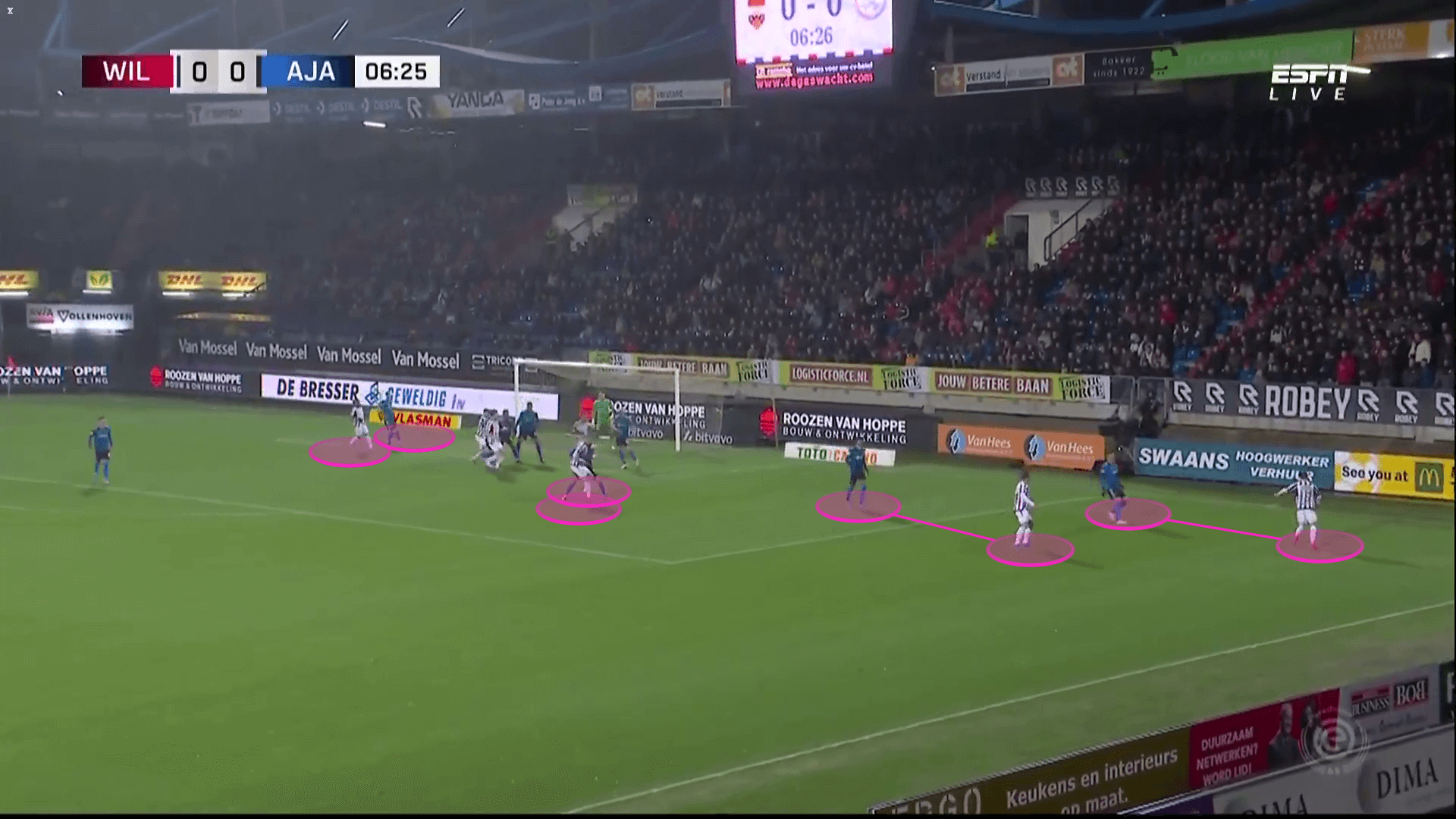
Comparison
As a point of reference, we have collected and compared the defensive data of both Ajax centre-backs, Timber and Martínez, with the data of a couple of the best defenders in European football currently — Rúben Dias and Virgil van Dijk.
Of course, there are a few different factors that need to be considered, such as overall league level, league and team playing style, player role, etc. While some of those differ in the case, the attached chart is indicative of the individual strengths and contributions of the players.
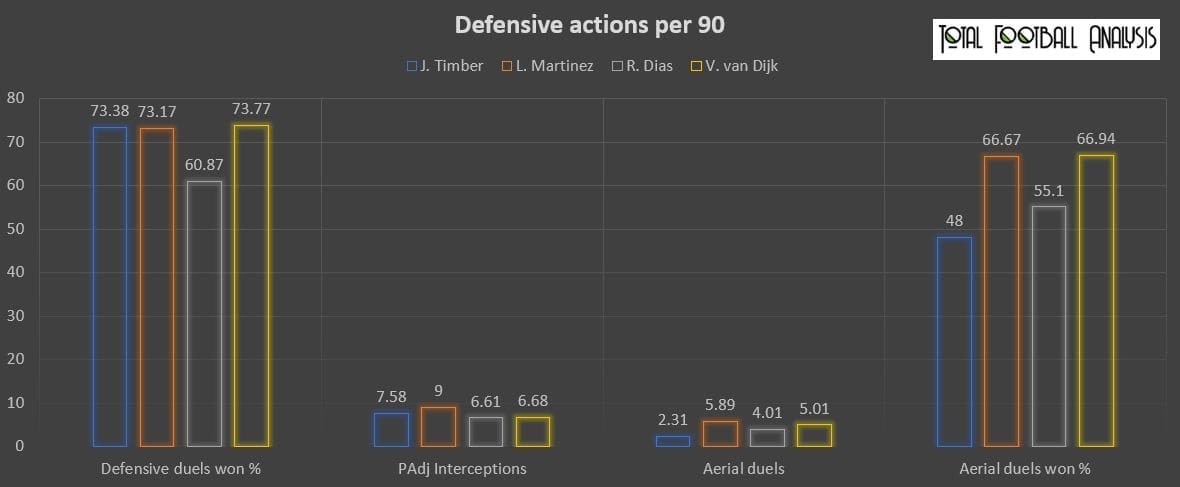
Looking at the defensive duels won percentile, we can see that all four players maintain a high success rate. Dias has the lowest number in this indicator, but this could easily be explained by the nature of his role as a key figure in possession.
It turns out that Martínez is the most efficient in terms of PAdj Interpcetion with his 9 per game. That’s an indicator, where Dias and Van Dijk have lower numbers than the Ajax teammates.
Martínez is also the most efficient in the air, despite being the shortest player out of the four. Only the Liverpool defender can conquer his 5.89 aerial contributions with a 66.67% success rate, as Timber and Dias have much lower efficiency.
These stats come as a reminder that Ajax have improved even more after the CL semi-final and that they are still able to develop players who can easily play at the highest level for top European teams.
Conclusion
Ajax have developed immensely over the last three years, despite selling some of their key performers to teams like Barcelona and Juventus and having to build around new personnel. Ten Hag has worked on the players’ tactical intelligence which is demonstrated in their movement both in and out of possession.
As our analysis shows, they have improved defensively and have turned into one of the best pressing teams in Europe, which might lead them to achieve a record-breaking season in defence.




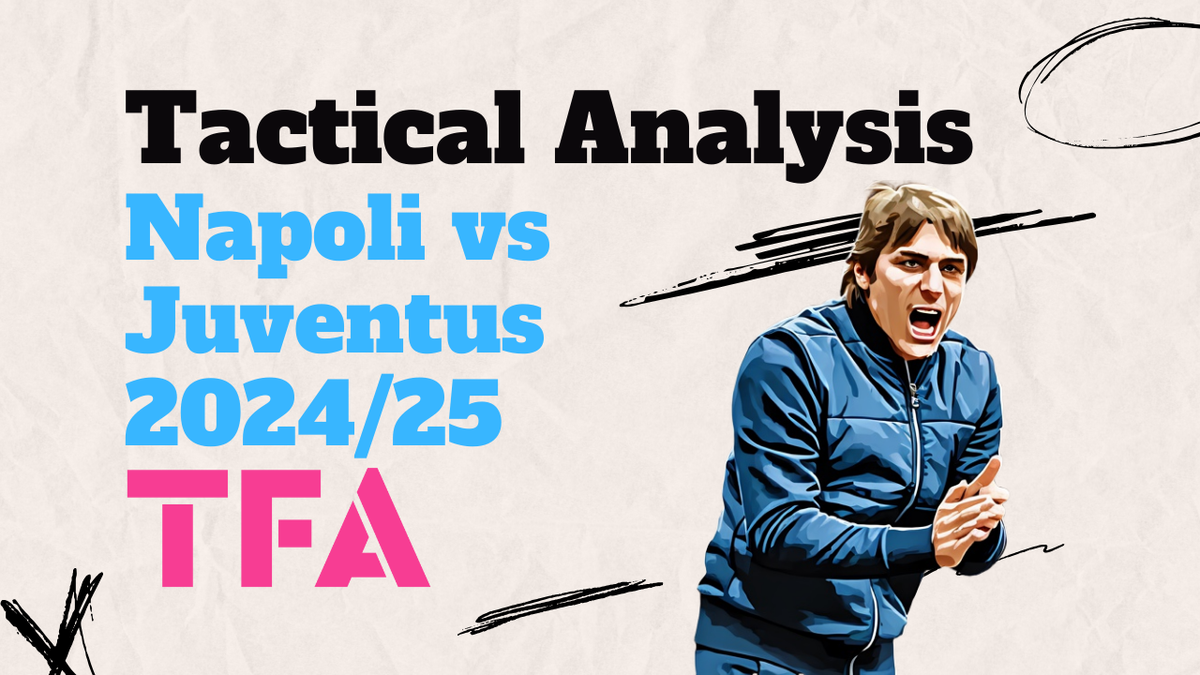
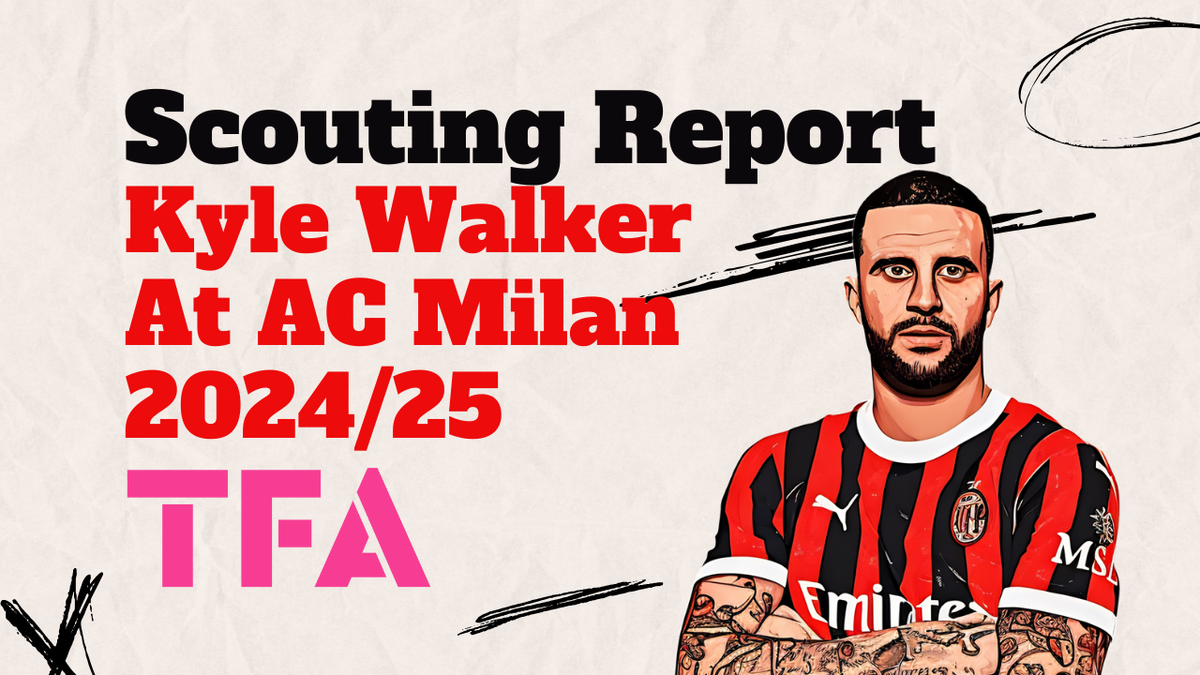
Comments